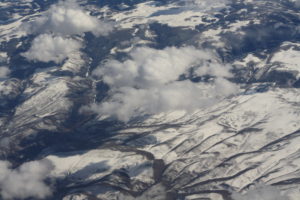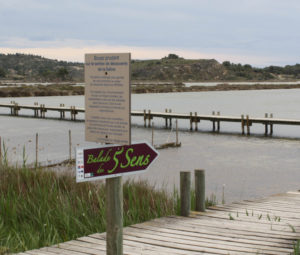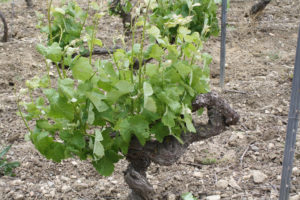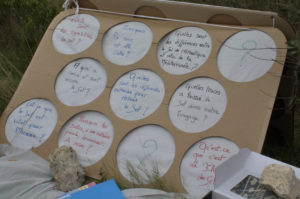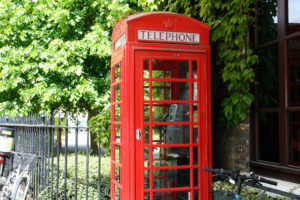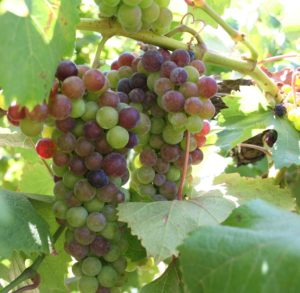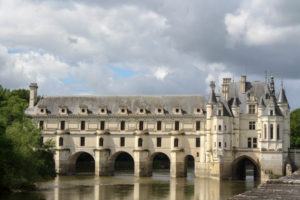Is the Eiffel Tower on your Paris Bucket List? If so, do you have a plan for visiting it?
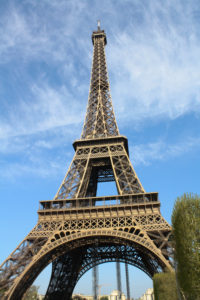
Security at the Eiffel Tower
We were there three years ago and again this year. One thing we noticed is the tightened security measures that now exist at the Eiffel Tower. Until the terrorist attacks in recent years, the area around and underneath the Eiffel Tower was completely open to the public. We could wander under the structure from one side to another, take photos as we looked up at the wonderful late 19th-century architectural masterpiece, get across the wide expanse…all without buying tickets.
Not so anymore. The whole area around the tower is fenced off and you can’t get past security to get underneath the tower unless you have tickets.
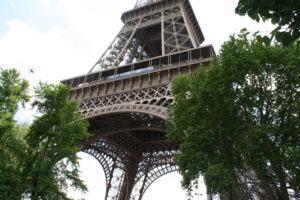
Booking tickets for the Eiffel Tower
Did you know…the most famous cultural symbol of France, the Eiffel Tower, is the most visited paid monument in the world and receives around seven million visitors a year.
Knowing that, this probably is the most important reason to book your tickets in advance! The best and easiest way to do this is online. Ahead of time…in some cases, a long way ahead of time.
But it might help to explain the different options for going up the tower first.
The stairs or the elevators?
First, let’s talk about the layout of the tower.
There are three levels to the tower. On the first level, there are some restaurants, a short film about the evolution of the Eiffel Tower and the new glass floor area that almost makes you feel like you’re walking on air.
On the second level, there is another restaurant and some souvenir stores. The third level is the summit of the tower, with a viewing deck, a champagne bar and a display of photos from the 19th century of the Eiffel Tower and its architect Gustave Eiffel. Views of Paris and beyond are spectacular. Take your camera.
There are two elevators within the tower; one serves the first and second levels and the other goes from the second to the third level. Some people choose to take the stairs to the second level as the queues are shorter and the ticket is cheaper. Fine, if you don’t mind over 600 steps!
Like most people, we took the two elevators to the top. Note that you can’t take stairs to the third level.
On the Eiffel Tower’s website, http://www.toureiffel.paris/en, you can book your tickets up to the second or third level.
TIP:
- The third level tickets often sell out a long time ahead. If you know when you will be in Paris…book those tickets now. You can always buy tickets on line to the second level, then buy the third level ticket when you get there. But, who wants to stand in line if you don’t have to? Lines can be long…really long.
Whatever option you choose for ascending the tower, you are allowed to take the elevators down to the bottom after you are finished.
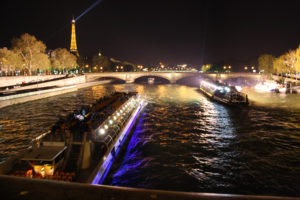
TIPS:
- You will need to pick a time-slot for visiting the Eiffel Tower when buying your tickets online. This is just the time that you need to arrive – you can spend as much time in the tower as you like! Try to pick a slot for first thing in the morning, at lunch-time or towards the end of the day when there are fewer people.
- Make sure you arrive on time, or several minutes ahead of your scheduled time. If you are late, you may not be allowed in.
- It can get very windy and cold on the second and third levels of the Eiffel Tower, and you will most likely have to line up outside for the elevator from the second to the third level; so even if the weather seems perfect on the ground, bring a warm jacket or sweater.
- If you plan to have lunch or dinner at one of the Eiffel Tower’s restaurants, make sure you book in advance, on the Eiffel Tower’s website, as there are often long queues for the restaurants.
